Toyota Yaris vs Fiat Panda – Differences & prices compared
Compare performance, boot space, consumption and price in one view.
Find out now: which car is the better choice for you – Toyota Yaris or Fiat Panda?
The Toyota Yaris (Hatchback) comes with a Full Hybrid or Petrol engine and Automatic or Manuel transmission. In comparison, the Fiat Panda (Hatchback) features a Petrol MHEV engine with Manuel transmission.
When it comes to boot capacity, the Toyota Yaris offers 286 L, while the Fiat Panda provides 225 L – depending on how much space you need. If you’re looking for more power, decide whether the 280 HP of the Toyota Yaris or the 70 HP of the Fiat Panda suits your needs better.
In terms of consumption, the values are 3.80 L per 100 km for the Toyota Yaris, and 5 L for the Fiat Panda.
Price-wise, the Toyota Yaris starts at 21900 £, while the Fiat Panda is available from 14100 £. Compare all the details and find out which model fits your lifestyle best!
In a head-to-head comparison between the Fiat Panda and the Toyota Yaris, both vehicles showcase distinctive qualities tailored to different driving preferences. The Fiat Panda impresses with its compact size and maneuverability, making it ideal for city driving and tight parking spots, while offering an affordable price point. On the other hand, the Toyota Yaris stands out with its reliable performance, better fuel efficiency, and a reputation for durability, appealing to those who seek a well-rounded subcompact car for urban and highway environments alike.
Toyota Yaris
The Toyota Yaris exudes a charming blend of practicality and style, making it an appealing choice for urban drivers. Its compact design allows for easy manoeuvrability in crowded city streets, while the interior offers a surprisingly spacious and comfortable environment. With a focus on fuel efficiency and reliability, the Yaris remains a popular option for those seeking a balance between performance and economy.
details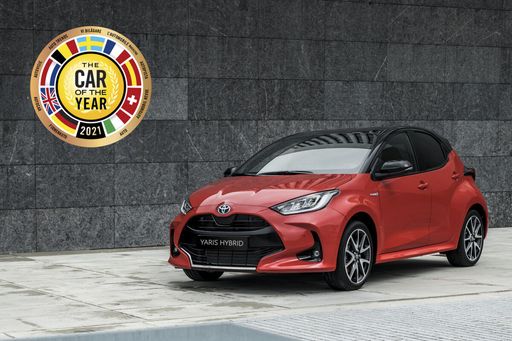 @ Toyota
@ Toyota
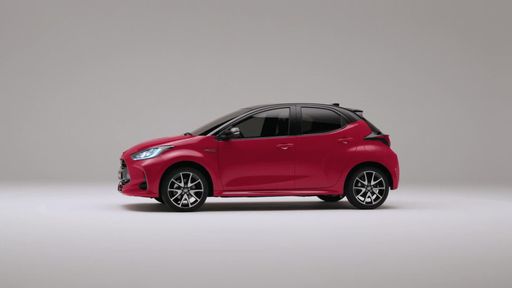 @ Toyota
@ Toyota
Fiat Panda
The Fiat Panda is a compact city car that brilliantly combines practical design and efficient functionality. Its boxy shape provides ample interior space and visibility, making it a favourite among urban drivers. With its reputation for reliability and affordability, the Panda continues to be a top choice for those seeking a no-frills, dependable vehicle.
details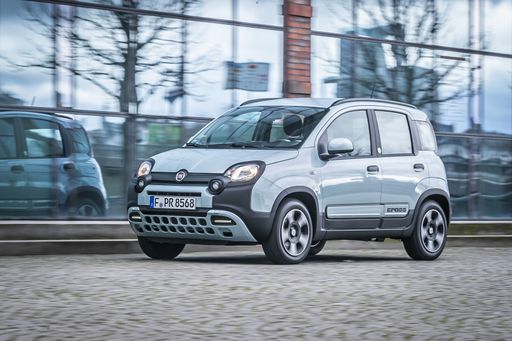 @ media.stellantis.com
@ media.stellantis.com
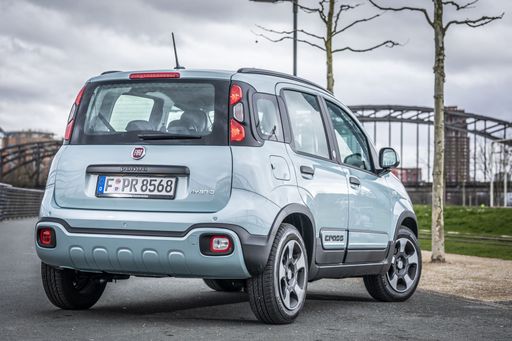 @ media.stellantis.com
@ media.stellantis.com
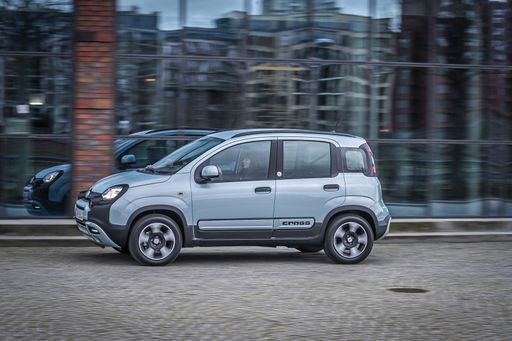 @ media.stellantis.com
@ media.stellantis.com
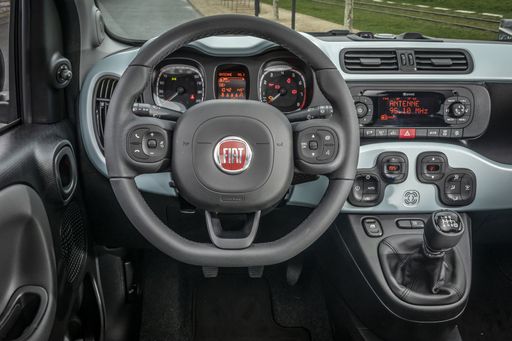 @ media.stellantis.com
@ media.stellantis.com
A Compact Showdown: Fiat Panda vs. Toyota Yaris
In the realm of compact hatchbacks, the Fiat Panda and Toyota Yaris have been household names for years. These two cars cater to city dwellers and those seeking efficiency and innovation in a small package. The 2024 models promise to continue their legacy, but how do they stack up against each other in terms of technical aspects and innovations? Let's dive into the details.
Design and Dimensions
The Fiat Panda sports a classic hatchback design, maintaining its reputation for a compact and practical style. The Panda is shorter, measuring between 3653 mm and 3705 mm in length, and has a narrower width ranging from 1643 mm to 1662 mm. The height varies from 1551 mm to 1657 mm, giving it a tall yet compact silhouette.
In comparison, the Toyota Yaris features a more modern aesthetic. It is longer, with lengths between 3940 mm and 3995 mm, and wider, spanning from 1745 mm to 1805 mm. The Yaris sits lower, with heights ranging from 1455 mm to 1500 mm, giving it a sporty appearance.
Powertrain and Performance
The Panda is powered by a 999 cm3 petrol mild hybrid (MHEV) engine, producing 70 HP (51 kW) and 92 Nm of torque. It uses a manual gearbox to drive the front wheels, achieving a respectable fuel consumption of 5 to 5.1 L/100km. The Panda accelerates from 0-100 km/h in approximately 13.9 to 14.7 seconds and has a top speed between 155 and 164 km/h. Its CO2 emissions range from 113 to 116 g/km, falling into efficiency classes C and D.
Meanwhile, the Yaris boasts a more diverse powertrain lineup, including a full hybrid and petrol options. The hybrid engine delivers 116 HP (85 kW) with a lower fuel consumption of 3.8 to 4.2 L/100km, emphasizing its eco-friendly credentials with CO2 emissions between 87 and 95 g/km (Class B). For enthusiasts, the Yaris offers petrol variants reaching up to 280 HP (206 kW), a remarkable performance leap. The Yaris accelerates from 0-100 km/h in as fast as 5.5 seconds, with a top speed of up to 230 km/h.
Interior Space and Comfort
The Panda provides a modest but practical interior, seating four or five persons with a trunk capacity of 225 liters. The vehicle's low curb weight of 1055 kg and a payload capacity of 365 kg underscore its suitability for urban maneuverability.
The Yaris offers more interior flexibility with a standard five-seat configuration and two trunk capacity options: 286 liters for everyday convenience. Despite its larger size and additional features, the Yaris maintains a competitive curb weight starting at 1090 kg.
Technology and Innovations
While the Panda focuses more on simplicity and practicality, the Yaris steps up with advanced technological features. Hybrid versions of the Yaris integrate Toyota's latest hybrid technology, offering significant improvements in fuel efficiency and lower emissions.
The Yaris also pioneers in safety and connectivity, consistently featuring updated infotainment systems and a comprehensive set of driver-assistance technologies, catering to tech-savvy drivers looking for a blend of efficiency and modern convenience.
Conclusion: Which Compact is Right for You?
Choosing between the Fiat Panda and Toyota Yaris largely depends on your priorities. The Panda excels as a cost-effective, practical urban runabout with its compact dimensions and straightforward design. On the other hand, the Yaris provides a more diverse option lineup, offering advanced hybrid technology and a sportier demeanor for those looking to strike a balance between performance and environmental consciousness.
Ultimately, both the Panda and Yaris have something unique to offer, catering to a wide range of driving preferences and lifestyle demands in the competitive world of compact hatchbacks.

|

|
|
|
|
Costs and Consumption |
|
|---|---|
|
Price
21900 - 45000 £
|
Price
14100 - 17100 £
|
|
Consumption L/100km
3.8 - 9.5 L
|
Consumption L/100km
5 - 5.1 L
|
|
Consumption kWh/100km
-
|
Consumption kWh/100km
-
|
|
Electric Range
-
|
Electric Range
-
|
|
Battery Capacity
-
|
Battery Capacity
-
|
|
co2
87 - 215 g/km
|
co2
113 - 116 g/km
|
|
Fuel tank capacity
36 - 50 L
|
Fuel tank capacity
38 L
|
Dimensions and Body |
|
|---|---|
|
Body Type
Hatchback
|
Body Type
Hatchback
|
|
Seats
4 - 5
|
Seats
4 - 5
|
|
Doors
3 - 5
|
Doors
5
|
|
Curb weight
1090 - 1356 kg
|
Curb weight
1055 kg
|
|
Trunk capacity
141 - 286 L
|
Trunk capacity
225 L
|
|
Length
3940 - 3995 mm
|
Length
3635 - 3705 mm
|
|
Width
1745 - 1805 mm
|
Width
1643 - 1662 mm
|
|
Height
1455 - 1500 mm
|
Height
1551 - 1657 mm
|
|
Payload
289 - 525 kg
|
Payload
365 - 385 kg
|
Engine and Performance |
|
|---|---|
|
Engine Type
Full Hybrid, Petrol
|
Engine Type
Petrol MHEV
|
|
Transmission
Automatic, Manuel
|
Transmission
Manuel
|
|
Transmission Detail
Schaltgetriebe, Automatikgetriebe
|
Transmission Detail
Schaltgetriebe
|
|
Drive Type
Front-Wheel Drive, All-Wheel Drive
|
Drive Type
Front-Wheel Drive
|
|
Power HP
116 - 280 HP
|
Power HP
70 HP
|
|
Acceleration 0-100km/h
5.5 - 9.7 s
|
Acceleration 0-100km/h
13.9 - 14.7 s
|
|
Max Speed
175 - 230 km/h
|
Max Speed
155 - 164 km/h
|
|
Torque
390 Nm
|
Torque
92 Nm
|
|
Number of Cylinders
3
|
Number of Cylinders
3
|
|
Power kW
85 - 206 kW
|
Power kW
51 kW
|
|
Engine capacity
1490 - 1618 cm3
|
Engine capacity
999 cm3
|
General |
|
|---|---|
|
Model Year
2024 - 2025
|
Model Year
2024
|
|
CO2 Efficiency Class
B, G
|
CO2 Efficiency Class
C, D
|
|
Brand
Toyota
|
Brand
Fiat
|
Toyota Yaris
Introducing the Next-Gen Toyota Yaris: A Blend of Innovation and Technology
The Toyota Yaris has long been lauded for its efficiency, reliability, and practicality. As we venture into the 2024 model year, Toyota has upped the ante with the latest versions of this popular hatchback, melding cutting-edge technology with eco-conscious design. Here’s an in-depth look at what makes the current Yaris line-up stand out from the crowd.
Efficient Powertrains: Hybrid and Beyond
Spearheading the technological innovation in the Yaris range is the introduction of various hybrid models. The Yaris offers a 1.5-litre full-hybrid engine, marrying a petrol engine with an electric motor to produce between 116 and 130 PS. This power blend is controlled via a sophisticated CVT-gearbox, optimizing both performance and fuel efficiency, with consumption figures ranging from an impressive 3.8 to 4.2 litres per 100 km.
For those seeking pure performance, the GR Yaris variants provide a turbocharged 1.6-litre engine capable of producing 280 PS. This power is delivered via a choice of manual or automatic transmission, giving drivers the tactile involvement or convenience they desire.
Design that Fulfils and Inspires
The Yaris hasn't forgotten its roots as a compact, city-friendly hatchback, measuring between 3,940 and 3,995 mm in length. With its bold front grille, sleek lines, and a choice of striking colours, it's a car that turns heads while remaining perfectly suited for urban environments.
The interior is equally impressive, designed with a focus on driver convenience and comfort. Depending on the variant, Yaris can offer generous cargo space of up to 286 litres, making it a perfect companion for everyday tasks or weekend escapes.
Technological Integration: The Smart Choice
Toyota's approach goes beyond just improving engine technology; the Yaris is packed with innovative features aimed at enhancing the driving experience. It boasts a suite of advanced safety systems such as lane departure alert, pre-collision system, and adaptive cruise control, ensuring peace of mind on the road.
The infotainment system in the Yaris is designed to keep you connected, offering seamless smartphone integration, a user-friendly interface, and an intuitive navigation system, ensuring that you're always informed and entertained.
The Cost of Innovation
Owning a Yaris is not just about impressive technology; it's also about making economic sense. With a price range between €25,500 and €49,990, and monthly costs spanning from €748 to €1,513, it offers a broad spectrum to suit different budget needs.
Concerned about emissions? You can rest easy knowing that the Yaris boasts a CO2 efficiency class ranging from B to G, thanks to its low emissions output of between 87 to 215 g/km.
Conclusion: The Toyota Yaris Drives the Future
The Toyota Yaris continues to be a strong contender in the compact car segment, pushing boundaries with its innovative full-hybrid systems and performance-oriented GR models. It's a remarkable blend of design, technology, and economy, ensuring it remains a top choice for drivers who demand more from their hatchbacks.
Whether you're seeking the efficiency of a hybrid or the thrill of the GR Yaris, there's a model tailored to your unique driving needs in Toyota's latest Yaris lineup.
Fiat Panda
A Renaissance on Wheels: The Fiat Panda
The Fiat Panda, with its unmistakable charm and practicality, has long been a fixture in the compact car segment. In 2024, Fiat has again managed to reinvent this beloved model, introducing innovative features and cutting-edge technology. Let's delve into what makes the new Fiat Panda a formidable player in the world of urban mobility.
Sleek Design and Practical Dimensions
The Fiat Panda retains its iconic tall and boxy silhouette, ideal for urban environments. Measuring between 3653 mm and 3705 mm in length, and with a width range of 1643 mm to 1662 mm, it's compact enough for tight city streets yet Spacious enough to ensure comfort. The height varies between 1551 mm and 1657 mm, offering a commanding view of the road and easy ingress and egress—the Panda's ample boot space of 225 litres and its versatile five-door configuration further boast its practical nature.
Powertrain Innovations
Under the bonnet, the Fiat Panda houses a 1.0 GSE Hybrid engine. This mild-hybrid petrol engine is designed to enhance fuel efficiency and reduce emissions. Delivering 70 PS (51 kW), this engine is a testament to Fiat's dedication to marrying performance with eco-friendliness. The innovative three-cylinder engine offers a torque of 92 Nm, providing sufficient power for urban and suburban driving. With a CO2 emission rating of 113 to 116 g/km, it occupies the C to D CO2-efficiency class range.
Performance that Suits Urban Life
The Panda excels in urban driveability, offering a top speed between 155 km/h and 164 km/h. The acceleration from 0 to 100 km/h takes between 13.9 and 14.7 seconds, making it spirited enough for daily commuting while ensuring optimal fuel economy, with a consumption of 5 - 5.1 L/100km. Such statistics highlight its balance of performance and efficiency, echoing Fiat's commitment to practical performance.
Interior, Comfort, and Connectivity
Inside, the Fiat Panda exudes a blend of comfort and modern technology. It caters to four to five passengers comfortably, offering a thoughtfully designed interior to enhance the user experience. Features such as user-friendly controls, a well-organised dashboard, and optional infotainment systems keep the Panda competitively modern in its segment.
Safety and Technology
The Fiat Panda is equipped with various safety features, designed with urban journeys in mind. It offers technologies such as traction control and hill-hold assist, catering to the demanding stop-and-go nature of city driving. The enduring charm of the Fiat Panda is bolstered by its underappreciated technological sophistication, ensuring that every journey is as safe as it is enjoyable.
Affordability and Value
With a price range from €15,990 to €19,290, the Fiat Panda remains an excellent value proposition. It is cost-effective, economical to run, and backed by Fiat’s reputation for reliability, making it a prudent choice for customers looking to balance style, efficiency, and value.
The Fiat Panda of 2024 stands as a testament to Fiat’s ingenuity, maintaining its reputation for practicality while embracing modern efficiency and innovation. Whether for the daily commute or a spontaneous adventure, the Panda continues to deliver a driving experience that is both enjoyable and efficient.
The prices and data displayed are estimates based on German list prices and may vary by country. This information is not legally binding.
